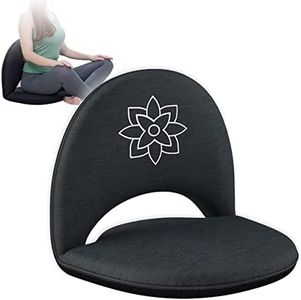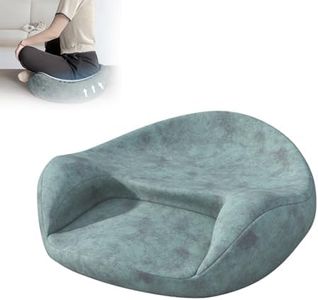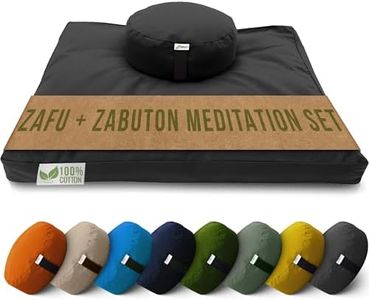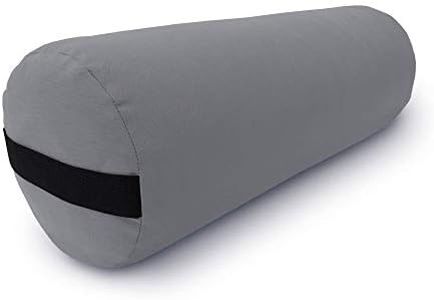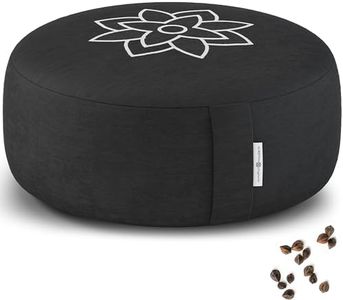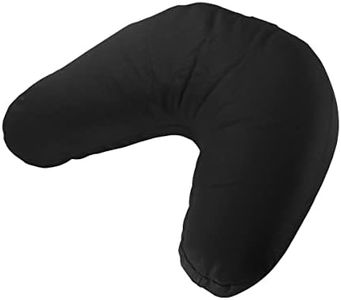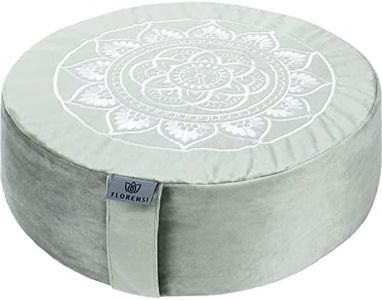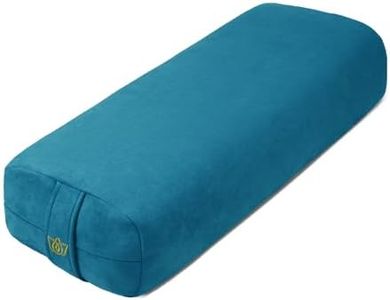We Use CookiesWe use cookies to enhance the security, performance,
functionality and for analytical and promotional activities. By continuing to browse this site you
are agreeing to our privacy policy
10 Best Meditation Cushions
From leading brands and best sellers available on the web.Buying Guide for the Best Meditation Cushions
When shopping for a meditation cushion, it's important to remember that comfort is paramount, but each person's needs and body type are unique. The right cushion helps you maintain a healthy posture, keeps you comfortable during longer meditation sessions, and can help prevent aches and pains. Understanding the key elements of a meditation cushion will help you select one that best matches your body, preferred meditation posture (sitting cross-legged, kneeling, etc.), and practice style.Cushion ShapeThe shape of a meditation cushion affects how you sit and how your weight is distributed. The most common shapes are round (zafu), crescent, and rectangular. A round cushion is versatile and supports traditional cross-legged postures, while a crescent shape offers extra support for the thighs, making it easier for your knees to touch the ground. Rectangular cushions are often used for kneeling or as support under other cushions. Consider your preferred meditation posture and choose a shape that gives you stable support and minimal strain.
Cushion Height/ThicknessThe height, or thickness, of a cushion determines how much it elevates your hips above your knees when sitting. A higher cushion is helpful if you have tight hips or less flexibility in your legs, as it makes sitting cross-legged easier and more comfortable. Lower cushions are best if you are more flexible or if you prefer to sit closer to the floor. Trying out different heights or measuring your usual comfort level on a folded blanket at home can give you a sense of what you need.
Filling MaterialThe inside material of a cushion greatly influences its feel and support. Common fillings include buckwheat hulls, kapok fiber, and foam. Buckwheat hulls create a firm but malleable cushion that conforms to your shape, providing good stability while allowing airflow. Kapok is a firm yet lighter plant fiber that gives a softer feel and doesn’t change shape as much. Foam is lighter and less traditional, offering varying levels of softness. Choose a filling based on whether you prefer firmness, adjustability, and how important weight is if you’ll be moving the cushion often.
Cover MaterialThe outer layer or fabric of the cushion affects both comfort and durability. Common fabrics include cotton, linen, or blends, which are soft and breathable. Some covers are removable and machine washable, making maintenance easier, while others may be spot-clean only. If you plan to use your cushion daily or in shared spaces, look for a strong but comfortable cover that’s easy to clean.
PortabilityPortability refers to how easy it is to carry or store your cushion. Lighter cushions or those with handles are more convenient to bring to group sessions or retreats, while heavier, bulkier options may be better for home use. Consider where you’ll be meditating most often and if you need something easy to move.
Size and DimensionsThe overall size of the cushion determines how much support you get and whether it fits your body and intended space. Larger cushions provide more room for different sitting positions, which can be useful for taller people or those with a wider build. Smaller cushions are suitable for more compact spaces or travel. Think about your body size and where you’ll use the cushion to ensure you get a comfortable fit.

